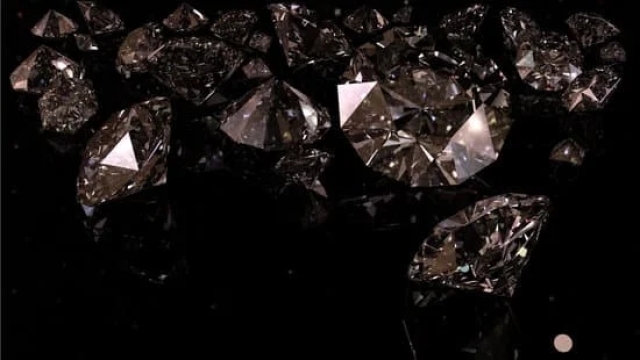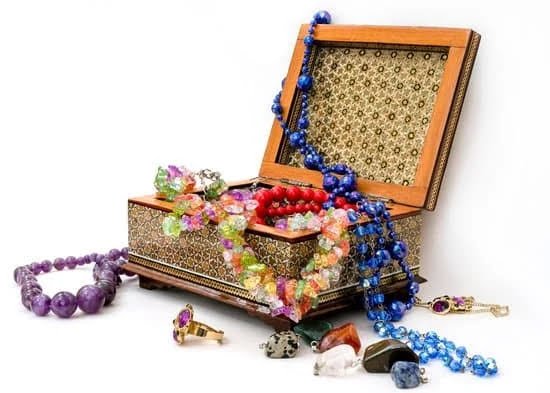The history of jewelry in Latin America dates back thousands of years, beginning with the Aztec and Mayan cultures that inhabited Central and South America. During this early period, jewelry was primarily made from gold and silver, as well as other materials such as jade, turquoise, quartz crystal, shell, wood and feathers. Jewelry had both a functional and decorative arrangement in these early societies; it may have been used to signify important social positions or access to certain religious ceremonies.
During the colonization period by Europe from 1521 onward, many Indigenous peoples experienced wholesale socio-economic and cultural transformations which included interactions with European goods, fashion accessories of the time including jewelry. During this period styles became blended with indigenous artistic traditions leading to a new variety of aesthetic styles greatly influencing each region differently as time progressed.
In the colonial era, gold continued to dominate Latino American jewelry designs due to its rarity and beauty. The most distinct type of Latin American jewelery that emerged during this period were signature products featuring intricate filigree designs. This type of work requires incredible skill – using delicate gold wires or threads to create images or patterns on metal surface.
Filigree work is an exquisite example of Ethiopian craftsmanship influenced by design elements taken from Spanish/Portuguese aristocracy dating back centuries before colonisation. Another notable influence upon the design style was Andean weaving techniques adopted into metal-work which generated heavier & sturdier pieces representing the heavily mixed heritage throughout Latin America & contributed towards sophisticated materials like platinum for more traditional items like wedding rings etc featured today in higher society scenarios across much of Latin America shaping further cultural versatility.
Pre-Colombian Jewelry
Earliest evidence of jewelry production in Latin America dates back to as far as 7000 BCE, with archaeological evidence suggesting that ancient cultures such as the Olmecs used gold, copper, clay and stone to create elaborate pieces. These ancient civilizations were some of the first to perfect metalworking techniques such as granulation enameling and artisans would create beautiful necklaces, bracelets and armbands using them.
Jewelry was believed to be an important element in many religious practices and cultural celebrations across Latina America at this time.
Colonial Jewelry: Adapting Existing Techniques To New Styles
The arrival of Europeans and colonization brought drastic changes to jewelry production in Latino America. Using a blend of European style with existing pre-colonial techniques, artisans created new hybrid styles which slowly emerged in different parts of the continent.
Different metals like silver became more widely adopted for making intricate settings for semi precious stones like turquoise while filigree began to play a larger role in jewelry designs throughout Spanish colonies. Artsitrans also began experimenting with newer methods like repoussé (hammering gold or silver into relief) to create more elaborate work.
Modern Jewelry: Fusing Industrial Technology With Creative Aesthetics
Today modern artisans are employing industrial technologies such as 3D Printing, laser cutting with traditional handcrafted techniques to create unique pieces. Designers have embraced an avant-garde aesthetic fusing contemporary materials with classic inspiration from ancestral cultures. Popular colors like pink gold have become popular choices over yellow gold while luxury brands have made use of innovative materials and manufacturing processes to create show stopping pieces:
• 3D printing • Laser carved silicone • Fusion metals • Hand cut gemstones.
The Impact of Spanish Colonization on Jewelry in Latin America
The history of jewelry in Latin America is closely intertwined with the arrival of Spanish colonists in the 16th century. The Spanish began importing gemstones and gold from Africa, India, and other areas and used them to create a booming jewelry industry.
This eventually led to a unique style of jewelry known as lusterware, which was inspired by ancient Roman and Islamic techniques. This type of jewelry combined bold colors with intricate designs, creating beautiful works of art that still exist today.
The establishment of the Spanish Empire brought about massive changes and transformations to the continent as a whole. This resulted in new styles of art including architecture, painting, music, sculpture, literature, and also a newfound focus on personal adornment in the form of fashion accessories such as necklaces, bracelets, earrings, and headdresses.
Jewelry was often used to distinguish social rank or to signify religious beliefs; for example aristocrats would wear expensive jewels such as emeralds and diamonds while peasants might utilize cheaper materials like copper or brass to make their decorative pieces.
- The coming of Spanish Colonization brought about immense changes in Latin American culture.
- This lead to a unique type of jewelry called lusterware which combines bold colors with intricate designs.
- Jewelry had many symbolism – it could signify social status or express religious belief.
Notable Jewelry Styles and Designs in Latin America
Jewelry has been used to adorn the body as far back as ancient civilizations in Latin America. Many of the jewels and jewelry designs that have grown popular today originated from different indigenous and colonial cultures, including the Maya, Aztecs, Inca or Taino people. All of these cultures had their own unique styles and varied types of materials used to craft their jewelry.
One of the most common materials used in ancient jewelry was stones or semi-precious elements such as jade, turquoise and obsidian which were then shaped into colorful bracelets, necklaces and earrings. They also had specific symbols that denoted a certain status or unity like a union between two families. These items of jewelry were made from precious metals such as gold and silver. Silver was often used for more everyday craftsmanship while gold was kept for more delicate works.
Modern Jewelry Latino America
In modern times, Latin American jewelry has continued to evolve with influences from more contemporary fashion styles being blended with traditional designs. This often means using bright colors, intricate beadwork and exquisitely crafted pieces that pay homage to various cultures within Latin America.
Another modern trend is the use of eco-friendly materials like wood, coconut shells and upcycled fabrics in the construction of Latina inspired trinkets. Several designer brands have also taken it upon themselves to promote sustainable practices by using recycled metals when crafting Latina styled staples such as charms and pendants.
The style of Latina-influenced jewelry can also vary a great deal depending on where it’s being designed or worn; many countries have unique trends based on their local culture so you may notice variations in shapes, colors or designs whether you’re looking at South American designs compared to Central American ones for instance.
Finally we can’t talk about modern Latin American inspired jewelry without mentioning Mexico’s handcrafted sterling silver pieces. Mexican silversmiths take great pride in their workmanship and are renowned for producing some truly exquisite handmade earrings, bracelets and necklaces that reflect Mexican craftsmanship at its finest.
Pre-Colombian Jewelry
The history of jewelry in Latin America has come a long way from its Pre-Colombian era metalworking techniques to the versatile jewelry designs we know and love today. Metalwork was an important part of pre-Columbian cultures, with many societies believing that metal had supernatural properties. Metals were even believed to have a transcendental connection with the deities.
The most commonly used materials for jewelry in this era were gold and silver as these metals had a special significance for their spiritual purposes. The style and features of these Pre-Colombian pieces strongly reflect the iconography and culture of each society, often including representations of gods or symbols associated with their belief systems.
Notable Pre-Columbian Jewelry
- Aztec Silvercraft: This type of jewelry was crafted using simple tools like tweezers to emboss intricate motives, while others were cast from molds.
- Mayan Goldwork: This is an incredibly complex style with detailed motifs crafted by skillfully combination forging small pieces to create larger objects.
- Olmec Bronzework: We can learn about Olmec rituals from the few surviving examples; featuring masks, figurines, and earspools which symbolised status within their hierarchical society.
Jewelry During the Industrial Revolution
The Industrial Revolution transformed many aspects of jewelry-making in Latino America from the mid 1800s to the early 1900s. Before the industrial era, most jewelry was handmade using specialized tools and techniques. Wealthier families had exclusive articles which were crafted one at a time by professional artisans.
The new industrial conditions of the period allowed craftsmen to produce multiple pieces at once with greater efficiency and larger quantities. Artisans used stamps and dies to create beautiful medallions from brass, silver, and gold. The middle class benefited from this change since they could now purchase jewelry for almost any occasion with more affordable prices than before.
The Introduction Of Mass Production
Additionally, during this period, mass production techniques began to slowly emerge in major cities like Buenos Aires which included several machines such as presses and automated lathes for polishing stones and metals. Jewelry making in cities developed for assembly line operations or one-off artistic productions where a single piece was replicated without alterations.
A boost of synthetic materials was also incorporated due to their low cost yet elegant aesthetics. As a consequence, common materials such as brass became much more popular among customers due to its economic price tag.
Printing Techniques Become More Accessible
By virtue of technological advancements that started during the industrial revolution, printing techniques like aquatinting and lithography became increasingly accessible for jewelry makers especially those located in Latin America where these processes allowed engravers to craft artistic designs on brooches, rings and necklaces with better clarity than ever before. This helped elevate the craftsmanship needed for producing intricate pieces that could fit every budget no matter how small it may be.
On top of this, stone carving technology developed during this period which helped jewelers reproduce jewellery based off existing antique masterworks enabling them to focus primarily on custom details or any minor changes necessary as desired by their customer base while keeping sequence times relatively short compared to other traditional methods like hand-cutting gemstones with lapidary tools.
Takeaways
The history of jewelry in Latin America is shaped by the culture and traditions of those in the region. This history includes a wide variety of materials such as gold, platinum, silver, and precious stones as well as different techniques used to make them. From traditional Incan pieces to more modern interpretations, jewelry has had a great influence on various countries throughout Latin America.
Jewelry has been used by Latin Americans for centuries and its designs often reflect the social and economic status of those wearing it. For example, during the colonial period wealthy landowners wore colorful clothing and accessories decorated with jewels that served both to display their wealth and indicate their spiritual beliefs. In modern times however, many individuals wear jewelry with a more personal meaning or simply as a way to demonstrate fashion choices.
Not only are jewelry items prevalent throughout Latin America but they also help establish and reinforce traditional values for young people living in the region. Many families purchase jewelry pieces from local artists that serve as keepsakes that can be passed down from generation to generation as reminders of cultural evolution over time.
They may also purchase money clips or wallets made from leather or native textiles embossed with symbols that take on special meaning within their culture such as icons associated with gods, goddesses, animals, or plants.
In addition to traditional shapes and motifs found in jewelry from around the world, people from Latin American countries often incorporate domestic themes into their designs such as national flags or pineapples which have come to be symbolic of South American cuisine.
There are also many contemporary interpretations for how technology and 3-D printing may be used to create unique pieces related to topics close to home like religious iconography or architecture seen in many cities all over Latin America.
Ultimately these pieces offer just one small glimpse into how people’s cultures have evolved over the years and will continue to do so for generations to come while keeping traditions alive through beautiful artistry found only in these parts of the world.

Welcome to my jewelry blog! My name is Sarah and I am the owner of this blog.
I love making jewelry and sharing my creations with others.
So whether you’re someone who loves wearing jewelry yourself or simply enjoys learning about it, be sure to check out my blog for insightful posts on everything related to this exciting topic!





